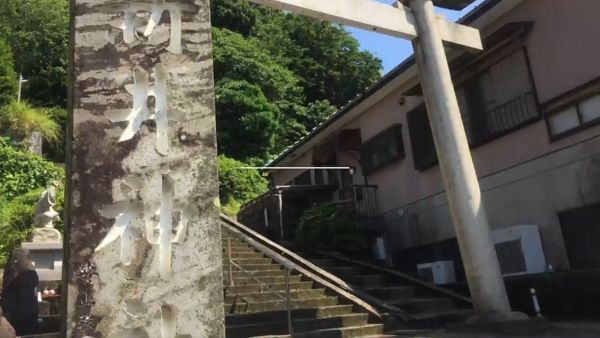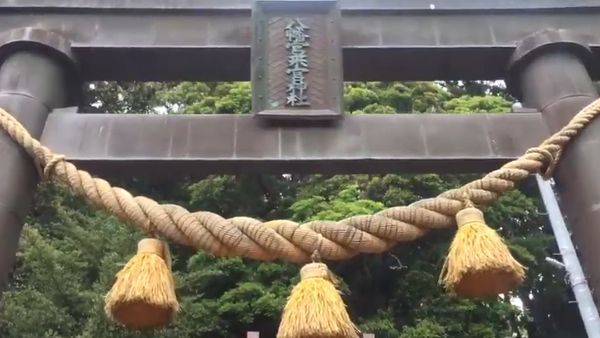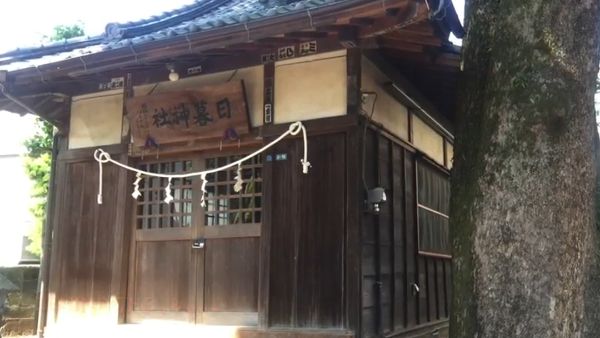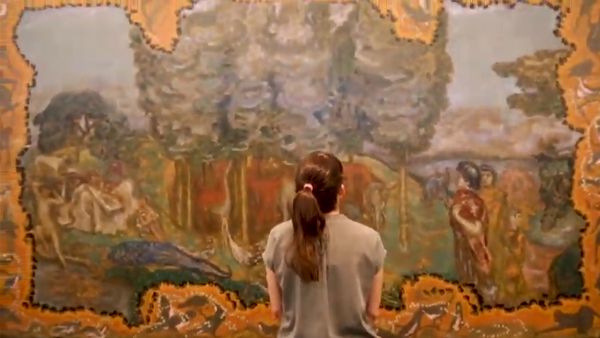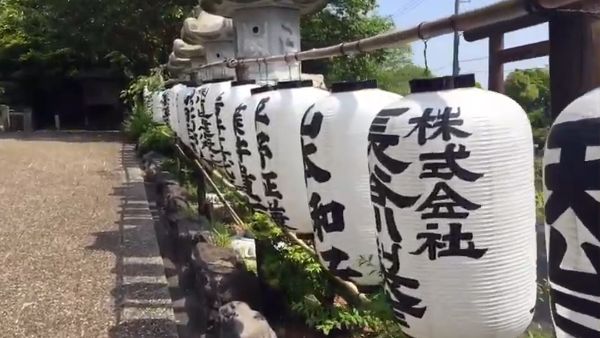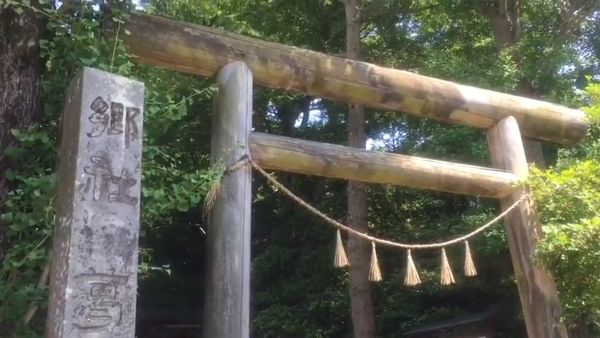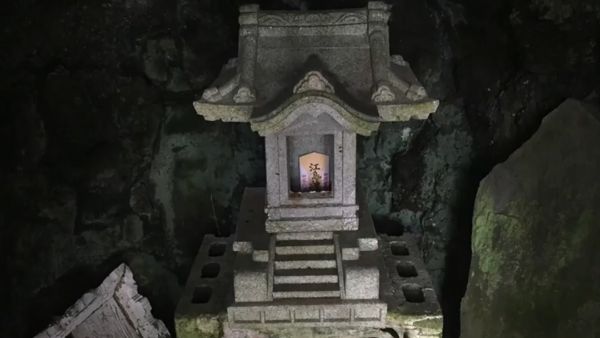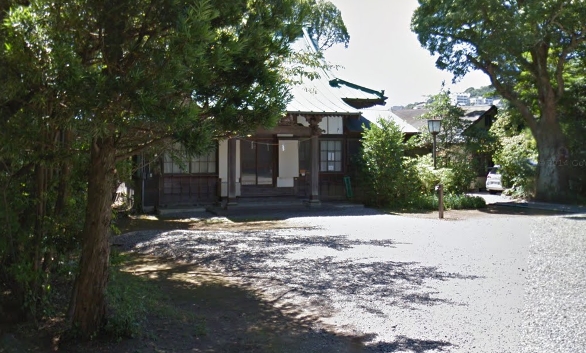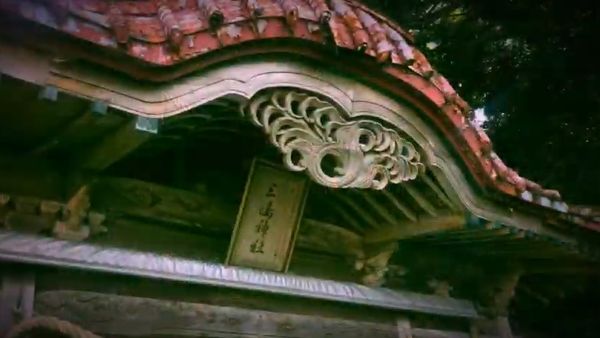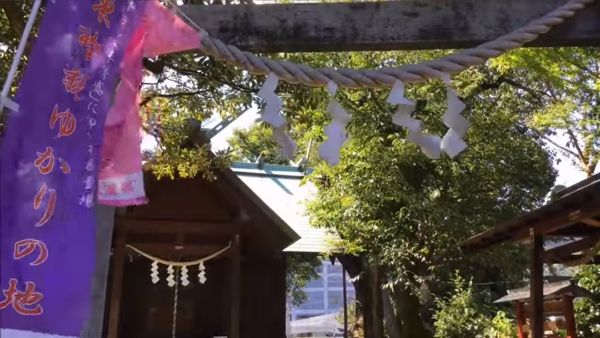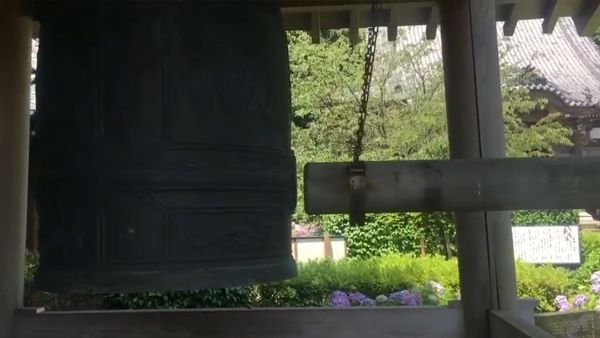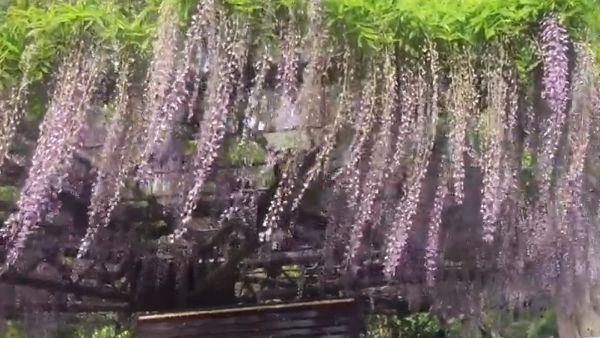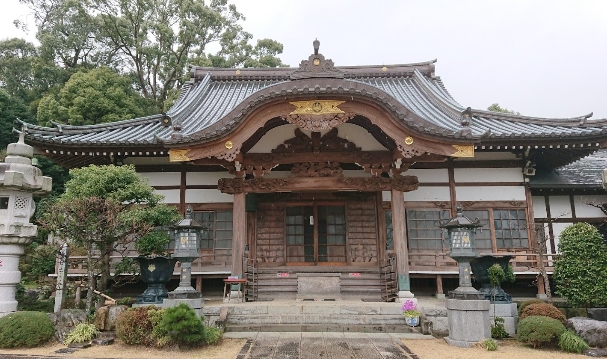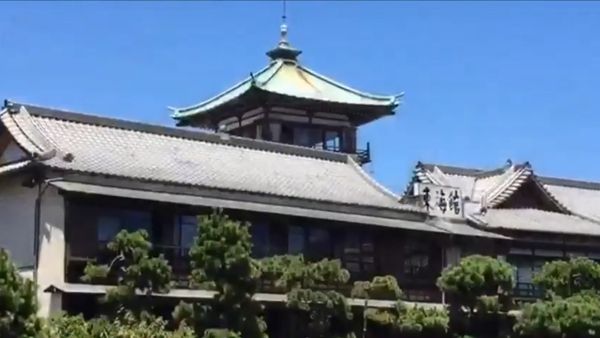Arai Shrine
Wait a minute, we’re able to eat delicious fish because of the shrine?!
Atop a plateau that gazes far out onto the Sagami Gulf lies the Arai Shrine, which was constructed to overlook Ito Harbor
and the fish market. Since being constructed in 1320, the Shrine is home to the god of good harvest which the local citizens pay homage to.
Address: 2-15-1 Arai, Ito city, Shizuoka Prefecture, 414-0043
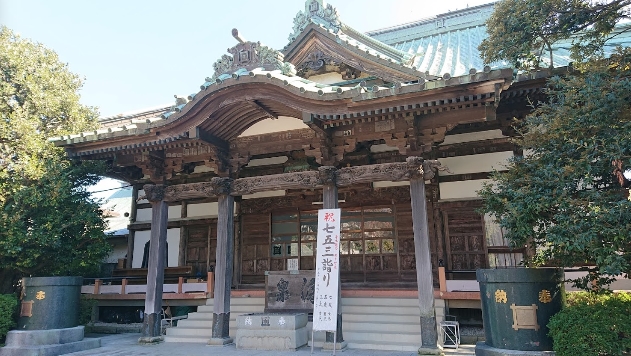
Butsugenji Temple
Dominated by two towers dedicated to the souls of the victims of earthquake and tsunami of the 1703 Genroku Earthquake and 1923 Great Kanto Earthquake respectively, the temple strikes an impressive pose on the Ito skyline. Due to the natural moss carpet, footsteps are muffled when wandering the expansive temple grounds, perhaps nature’s way of paying respect to the residing souls. Kawana, the location of the temple is imprinted in Buddhist history as the place of exile for the Buddhist messenger Nichiren Shonin. Tied up on the infamous chopping board rock to await death from the rising tide, Nichiren was rescued and brought to the temple.
Address: 2-30 Monomigaoka, Itō-shi, Shizuoka-ken 414-0025, Japan
+81 557-37-2177
Futo Mishima Shrine
Go back in time in this city-designated cultural property!
Futo Mishima Shrine is actually two different shrines situated in one building. One structure housing two different places of worship is quite rare, and as such it was designated as cultural property by the City of Ito.
Mishima Shrine is dedicated to tragic figure of Sentsurumaru, son of Minamoto no Yoritomo and Yaehime. Yaehime was a daughter of Ito Sukechika, who has unified and developed the Ito region, including the introduction of flood control system to the area.
Address: 413-0231 Shizuoka, Ito, Futo 686
Hachimangu Kinomiya Shrine
A spiritual “power spot” blocked off from the outside world
In Izu Kogen, there is a hidden “power spot” known only by a few: Hachimangu Kinomiya Shrine. This shrine was built in the year 769, making it over 1200 years old. Once you pass through the red gates, the silent, moss-covered grounds and endless number of cedars will make you feel as if you’ve been transported to another world completely cut off from the outside. The deities enshrined here are Honda Wake no Mikoto and Ihakura Wake no Mikoto, the latter of which is renowned as a lover of sake, so much that shrine visitors often leave gifts of sake at the shrine.
Address: 1 Yawatano, Ito, Shizuoka Prefecture 413-0232
Higurashi Hachimangu Shrine
The Sunset Shrine – where love waits
Although this shrine sits unassumingly in a residential area of Ito, history runs deep within the grounds. Guardian gods of good harvest, domestic safety and safety in birth are enshrined here, but in the past, it was the living that provided the most drama. The shogun Minamoto Yoritomo would travel to Ito to meet with Princess Yae – royalty who devoted herself to the cultural development of Ito. Their love was forbidden by the princess’s father and therefore the two lovers were forced to meet in secret and under the cover of darkness in the nearby “Forest of No Sound”.
Address: Sakuragicho 1-2-10, Ito City. 414-0013
Ikeda Museum of 20th Century Art
Ikeda Museum of 20th Century Art, which opened in May 1975, is known as one of the first contemporary art museums in Japan. Here, you’ll find a dazzling collection of pieces that you can enjoy up close from mostly Western artists.
The lineup of artists whose works are on permanent display at this museum is nothing short of impressive – here you’ll find masterpieces from Picasso, Dali, Renior, Chagall, Warhol, and many more. Included in the collection are pieces such as “Mimosa” by Henry Matisse, which was lent to the Museum of Fine Arts in Boston and Royal Academy of Arts in England, and “After the Deluge” by Pierre Bonnard which was lent to the Musée d’Orsay in Paris.
Hours: 9:00 am – 5:00 pm
Closed Every Wednesday (open if Wednesday is a holiday; also open daily in July, August, and at the end of the year)
Address: 614 Totari, Ito City, Shizuoka Prefecture 414-0052
Phone: 0557-45-2211
Jingi Shrine
Jingi Shrine is said to house a myriad of deities. People come from all around to pray for health, childbirth, good grades, prosperous business, and more. Jingi Shrine is also known as a place to visit with pets, a rarity in Japan.
When praying at a shrine in Japan, many people write a message on an ema, a small wooden board used for this purpose. There are also ema for pets, so don’t forget to write one for your pet waiting for you back home! There are also a variety of souvenirs sold at the shrine, including ones that you can attach to your pet’s collar.
As you enter the shrine grounds, you will find several stone slabs with hieroglyphs carved into them at your feet.
Kuzumi Shrine
Must-visit spot in Ito! Feel the powerful presence of the tutelary god protecting the shrine since the ancient times.
Kuzumi Shrine was mentioned in shrine registers as early as 927. It was erected by Ietsugu Ito, the founder of the Ito clan, to ensure the prosperity of his family. Since then, Kuzumi Shrine is considered to house the deity that protects the Ito City.
Address: 1 Chome-16-40 Babachō, Itō-shi, Shizuoka-ken 414-0033
Lake Ippeki Shrine
immerse, relax, unwind at the Lake Ippeki Shrine
Hidden away at Lake Ippeki – the body of water lying in a crater caused by volcanic eruption – Lake Ippeki Shrine is a small, spiritual spot nestled in the greenery of the lake’s surroundings. The small shrine will reveal itself as you stroll around the bank. Passing through the gates, you enter the realm of gods charged with the sources of life. These residents of the shrine pledge to bring together both people and nature, to coexist with strength. Happiness is one of the gifts they offer to all visitors.
Matsubara Hachiman Shrine
Constructed between the years of 1185-1189, this shrine is one of the many homes dedicated to the deity of Hachiman. Once worshipped as a powerful warrior, a new devotion to peace after the Second World War led to a change in how this god was viewed and people began to summon him to pray for successes in everyday life; asking for prosperity for family, health, business, education, maritime safety and an abundant fish catch.
Beyond the Torri gate that stands guard at the gateway, a stone staircase will take you up to the sanctuary of the shrine. Explore further into the grounds and discover the Homusubi Shrine, a smaller place of worship that houses the god of fire quashing. Fire had destroyed a lot of the area in the past, so villagers pray that a similar event won’t happen again.
Matsubara 707, Ito City, 414-0006
Mishima Kawana Shrine
Mishima Shrine, which overlooks Kawana Port, is a quiet, serene shrine that gives you stunning views of several islands and the townscape of the the fishing village of Kawana. The shrine was built by Minamoto no Yoritomo, who founded Japan’s first military government, and it is said that he used to visit this shrine to pray for success. These days, the local residents say that the god of the sea dwells in this shrine.
The usually quiet and peaceful Mishima Shrine becomes anything but every year in October, when it becomes the stage of a rowdy autumn festival where the zealous fisherman of the village compete in a contest of strength, spinning around massive poles with lanterns that weigh over 60 kilograms! Along with this amazing festival, the dashi (festival floats) and mikoshi (portable shrines)
Address: 414-0044, Shizuoka Prefecture, Ito City, Kawana 868
New York Lamp Museum and Flower Garden
If you’re looking for a place that offers both a unique museum experience and stunning ocean views, look no further than the New York Lamp Museum and Flower Garden. Located a 9-minute bus ride and 7-minute taxi ride from Izu Kogen Station, this museum boasts a beautiful collection of Tiffany lamps and amazing stained glass art in a variety of styles and colors which convey the essence of the American art nouveau period, in which Tiffany lamps became very popular.
Address: 841-1 Futo, Ito City, Shizuoka Prefecture 413-0231
Phone: 0557-51-1128
Admission: Adults (middle school age and above): 1,200 yen
Children: 600 yen
Babies: free admission
Parking fee: Regular cars: 700 yen
Buses, larger vehicles, and RVs: 1,000 yen
Otonashi Shrine
Turn the sound down and your senses up in the serene Otonashi Shrine (The Shrine of No Sound)
The never-sleeping, 24 hour lifestyle of Japanese cities can be an overwhelming experience.
Look to reset the balance with a trip to Otonashi Shrine, an ancient spot steeped in the drama of ancient love affairs. The powerful Japanese general Minamoto no Yoritomo will forever be connected with this shrine as it was here he would meet Princess Yae in secret, away from prying eyes.
The female deity who resides in this particular shrine also provides comfort with the promise
of safe delivery in childbirth; a welcome thought through one of life’s biggest trials.
1-12 Otonashichō, Itō-shi, Shizuoka-ken 414-0032, Japan
+81 557-37-2213
Renchaku Temple
A place that brings together culture and nature created by the Geopark
Renchaku Temple stands atop Jogasaki Coast, which was formed by lava from the eruption of Mt. Omuro approximately 4,000 years ago. Renchaku Temple offers several chances to interact with Japanese culture, one of them being the “Joju no kane”, or “Buddhist Bell”, located to the left of the main temple. In Japan, it’s a common practice to ring the temple bell before offering a prayer to Buddha, with good luck coming to those who put at least 100 yen in the offering box.
Address: 835 Futo, Ito City, Shizuoka Prefecture 413-0231
Rinsenji Temple
Behold the true beauty of Japan in this prefecturally-designated natural monument
Rinsenji Temple was established 500 years ago. It is dedicated to Fukurokuju, the god of happiness, wealth, and longevity, one of the Seven Lucky Gods of Ito. A must-see of Rinsenji Temple are the flowers of Japanese wisteria. Some of the wisteria plants are over 300 years old. People in the know gather in Rinsenji Temple between the beginning of April and the beginning of May to behold Wisteria flowers in full bloom.
Address: 414-0053 Shizuoka-ken, Itō-shi, Ogi, 90
Shogetsuin Temple
xplore the beautiful garden, the goddess of fortune made her abode.
The temple of Shogetsuin boasts a beautiful view overlooking the Ito city. The temple grounds include a beautiful garden featuring early-flowering weeping cherries, pine trees, and sago palms. The temple is dedicated to Benzaiten, the goddess of fortune. There’s a story about a couple of peasants who found a shining statue of a dragon among the paddies. The night after they placed it in their home Benzaiten has appeared at their bedside ordering them to “enshrine the statue where the clear water flows”.
Address: 377 Yukawa, Itō-shi, Shizuoka-ken 414-0002
Tokaikan
While in Ito, you definitely won’t want to miss one of its most famous and impressive old buildings, Tokaikan.
Built in 1928, Tokaikan served as a ryokan (traditional Japanese inn) for guests coming to enjoy hot springs for over 65 years until 1997. After undergoing restoration, it reopened in 2001 as a historical sightseeing spot open to the general public. Step inside to get a glimpse at Japanese hotel facilities that are decades old, complete with historical artifacts and intricate wood cravings that give the rooms a distinct Japanese feel. You’ll feel like you’ve stepped right into a historical period drama!
12-10 Higashimatsubarachō, Itō-shi, Shizuoka-ken 414-0022, Japan
www.itospa.com
+81 557-36-2004
Ubako Shrine
Ubako Shrine – A power spot in Kawana!
This shrine, which happens to be located in a geopark, is located in a sacred coastal area and contains a yellow Torii inside, which is a bit unusual seeing how Toriis are often red. The goddess of the sea Toyotamahime no Mikoto is enshrined here and is admired by the local fishermen in the Kawana area. Continuing onward to the yellow Torii, you will come upon a cave that is 30 meters wide, seven meters tall, and 20 meters in depth, and the Ubako Shrine resides in the deepest part of the cave. This coastal cave is the result of many years of wave erosion, and one can really feel the power of nature through the rock cliffs that tower above, and clearly understand why this cave was formerly an object of faith.
Address: 1249 Kanawa, Ito city, Shizuoka Prefecture, 414-0044″
